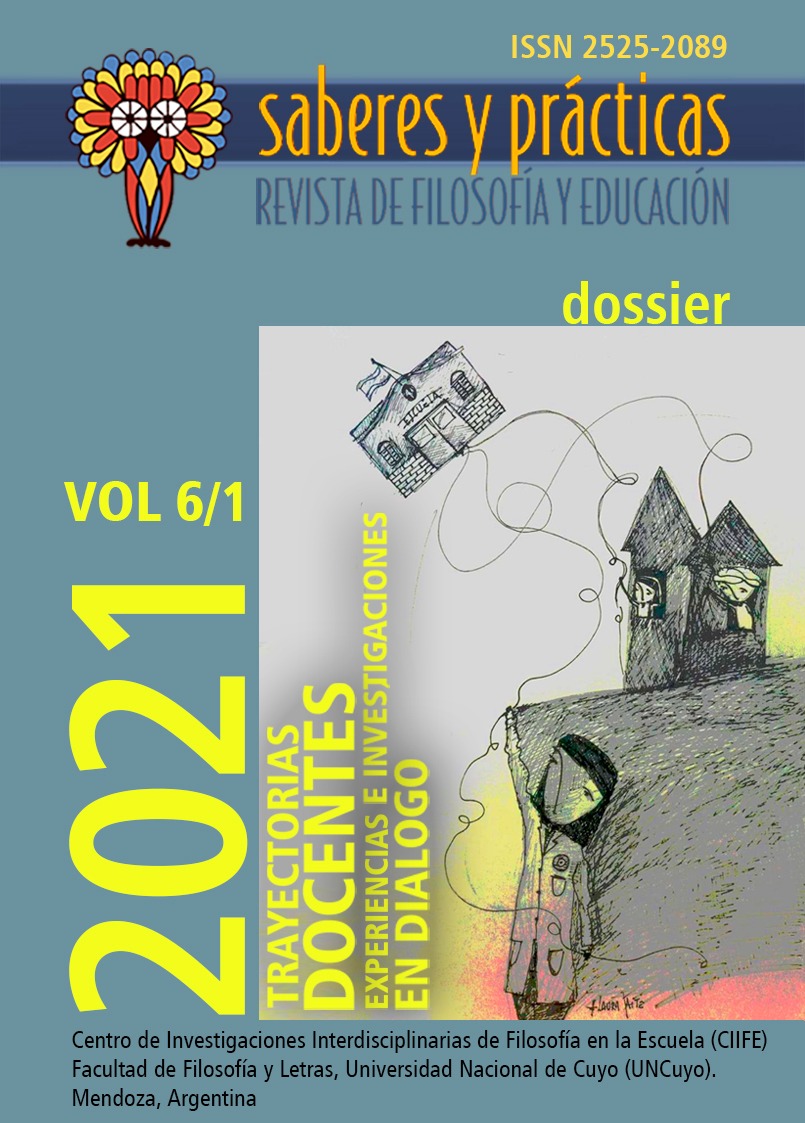An Accessible Digital Structure is a Human Right of People with Visual Impairment
DOI:
https://doi.org/10.48162/rev.36.021Keywords:
tiflotechnical advices, visual impairment, inclusive education, meaningful learning, accessibilityAbstract
Online education forced by the 2020 pandemic, can be a springboard of opportunities for the inclusion of visually impaired persons through assistive technologies; or they can be left out due to the illiteracy that exists in society regarding where to find and how to use assistive technologies, to promote the inclusion of this collective. Therefore, it is vitally important to implement assistive technologies and innovative teaching methodologies that enable meaningful learning and can motivate visually impaired students to participate more proactively. The gamification and random formation of teams that enable platforms potentializes the adaptive capacity of these students in the educational community, while exercising the right to accessibility through information in multiple formats of universal design for learning. In this essay, the author, who leads a tiflotechnical room at a polytechnic university, discusses the type of digital technologies that help eliminate barriers to learning for people with visual disabilities – group to which she belongs- to be able to generate the type of educational scenarios they require.
Downloads
References
Alba, C., Sánchez, J.M. y Zubilaga, A. (2014). Diseño universal para el aprendizaje (DUA). Pautas para su introducción en el currículo. https://www.educadua.es/doc/dua/dua_pautas_intro_cv.pdf
Anderson, B. (2020, agosto 8). El privilegio de regresar a clases: SEP deja fuera a alumnos con discapacidad. Animal Político. https://www.animalpolitico.com/2020/08/privilegio-regresar-clases-sep-deja-fuera-alumnos-discapacidad/
Apple. (2021). Activar VoiceOver y practicar gestos en el iPhone. Obtenido de Manual del Usuario del iPhone: https://support.apple.com/es-es/guide/iphone/iph3e2e415f/ios#:~:text=Pulsa%20tres%20veces%20el%20bot%C3%B3n%20de%20inicio%20(en%20un%20iPhone,activa%20o%20desactiva%20el%20ajuste
Bruner, J. (1997). La educación: puerta de la cultura. Visor.
Comisión Nacional de los Derechos Humanos. (2018). La Convención sobre los derechos de las personas con discapacidad y su protocolo facultativo. https://www.cndh.org.mx/sites/default/files/documentos/2019-05/Discapacidad-Protocolo-Facultativo%5B1%5D.pdf
Díaz Barriga, F. (2006). Enseñanza situada. Vínculo entre la escuela y la vida. McGraw Hill.
Echeita, G. (2020). La Pandemia del Covid-19. ¿Una Oportunidad para Pensar en Cómo Hacer más Inclusivos Nuestros Sistemas Educativos? Revista Internacional de Educación para la Justicia Social, 9 (1), 7-16. https://revistas.uam.es/riejs/article/view/12152
Echeita, G. y Ainscow, M. (2011). La educación inclusiva como derecho. Marco de referencia y pautas de acción para el desarrollo de una revolución pendiente. Tejuelo, 12, 26-46. https://repositorio.uam.es/handle/10486/661330
Frías, L. (2021, enero 18). Fortalece la Universidad inclusión de estudiantes con discapacidad. Los atiende durante el confinamiento. Gaceta UNAM. https://www.gaceta.unam.mx/fortalece-la-universidad-inclusion-de-estudiantes-con-discapacidad/
Google (2021). Como activar TalkBack. Ayuda de accesibilidad de Android. https://support.google.com/accessibility/android/answer/6007100?hl=es-419&ref_topic=10601570
Ilumina, Ceguera y Baja Visión. (2021). Nosotros. http://ilumina.mx/nosotros/
Instituto Nacional de Estadística y Geografía, INEGI (2016). La discapacidad en México, datos al 2014.
Lion, C. (2020). Enseñar y aprender en tiempos de pandemia: presente y horizontes. Saberes y Prácticas. Revista de Filosofía y Educación, 5 (1), 1-8. https://revistas.uncu.edu.ar/ojs3/index.php/saberesypracticas/article/view/3675
Maslow, A. H. (1943). A theory of human motivation. Psychological Review, 50 (4), 370–396. https://doi.org/10.1037/h0054346
Meresman, S. y Ullmann, H. (2020). COVID-19 y las personas con discapacidad en América Latina. Serie Políticas Sociales 237. CEPAL/Naciones Unidas. https://repositorio.cepal.org/bitstream/handle/11362/46278/1/S2000645_es.pdf
MICROSOFT. (2021). Escuchar texto leído en voz alta con el Narrador. https://support.microsoft.com/es-es/windows/escuchar-texto-le%C3%ADdo-en-voz-alta-con-el-narrador-040f16c1-4632-b64e-110a-da4a0ac56917#:~:text=El%20Narrador%20lee%20en%20voz,de%20Windows%20%2B%20Ctrl%20%2B%20Entrar
Palacios, A. (2008). El modelo social de discapacidad: orígenes, caracterización y plasmación en la Convención Internacional sobre los Derechos de las Personas con Discapacidad. Madrid: CERMI.
https://www.cermi.es/sites/default/files/docs/colecciones/Elmodelosocialdediscapacidad.pdf
Quintanar, C. P., Uribe, A. H. y Vallejos, A. (2020). Actores sociales en la valoración de la permanencia escolar en educación media superior. DIGITAL CIENCIA@UAQRO, 13 (2), 53-75. http://ciencia.uaq.mx/index.php/ojs/article/view/91/60
Roldán, N. (2021, marzo 24). Deserción escolar: seis testimonios explican por qué la pandemia los sacó de las aulas. Animal Político. https://www.animalpolitico.com/2021/03/desercion-escolar-testimonios-pandemia-saco-aulas/
Published
How to Cite
Issue
Section
License
License
This work is licensed under a Creative Commons Attribution-NonCommercial-ShareAlike 2.5 Argentina License.





















